Here‘s my super easy, copycat recipe of Trader Joe’s Japanese Fried Rice with Edamame, Tofu, and Hijiki Seaweed! Keep the ingredients stocked in your pantry and make this delicious fried rice from scratch any time, any day. {Gluten-free and vegetarian/vegan}

Back in November 2017, when I shared a picture of Trader Joe’s popular Japanese Fried Rice, many of you said how much you would love to get a recipe to make it from scratch with fresh ingredients. Your enthusiasm about the flavor combination inspired me to create my own version to share with you. So I picked up a few bags from Trader Joe’s, cooked up the Japanese Fried Rice, and got to work replicating the dish for you.
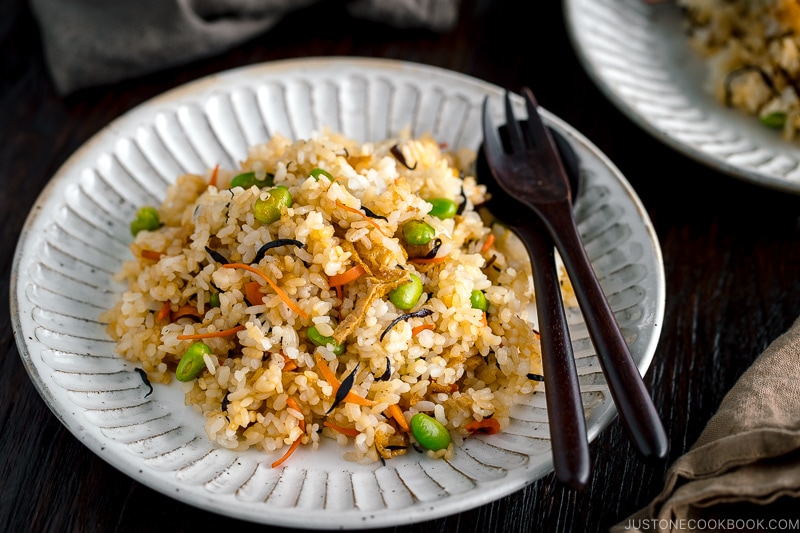
Is Japanese Fried Rice Sweet?
When you first taste Trader Joe’s fried rice, the first thing you may notice is the sweetness. For many of you who eat fried rice often, this could be the strangest fried rice you encounter. Why does the Japanese fried rice taste so sweet?
Well, Trader Joe’s Japanese Fried Rice is seasoned with mirin, sugar, soy sauce, sake, and sesame oil. I’m pretty sure this product was created simply by combining steamed rice with Japanese Hijiki Seaweed Salad (or Simmered Hijiki) (ひじきの煮物).
The classic Hijiki Seaweed Salad is seasoned with mirin, sugar, soy sauce, sake, and sesame oil. The taste can be on the sweeter side especially when it’s meant to be served at room temperature or chilled. So when the steamed rice is mixed with Hijiki Salad, you end up with sweet Japanese fried rice!
One thing to note: Trader Joe’s Japanese Fried Rice is much sweeter than my copycat recipe. In keeping with authentic home-style Japanese cooking, it’s elemental for me to balance the sweet and savory without overpowering one another. You will find my version less sweet than Trader Joe’s original. However, if you prefer a sweeter taste, please feel free to adjust the amount of mirin or sugar.
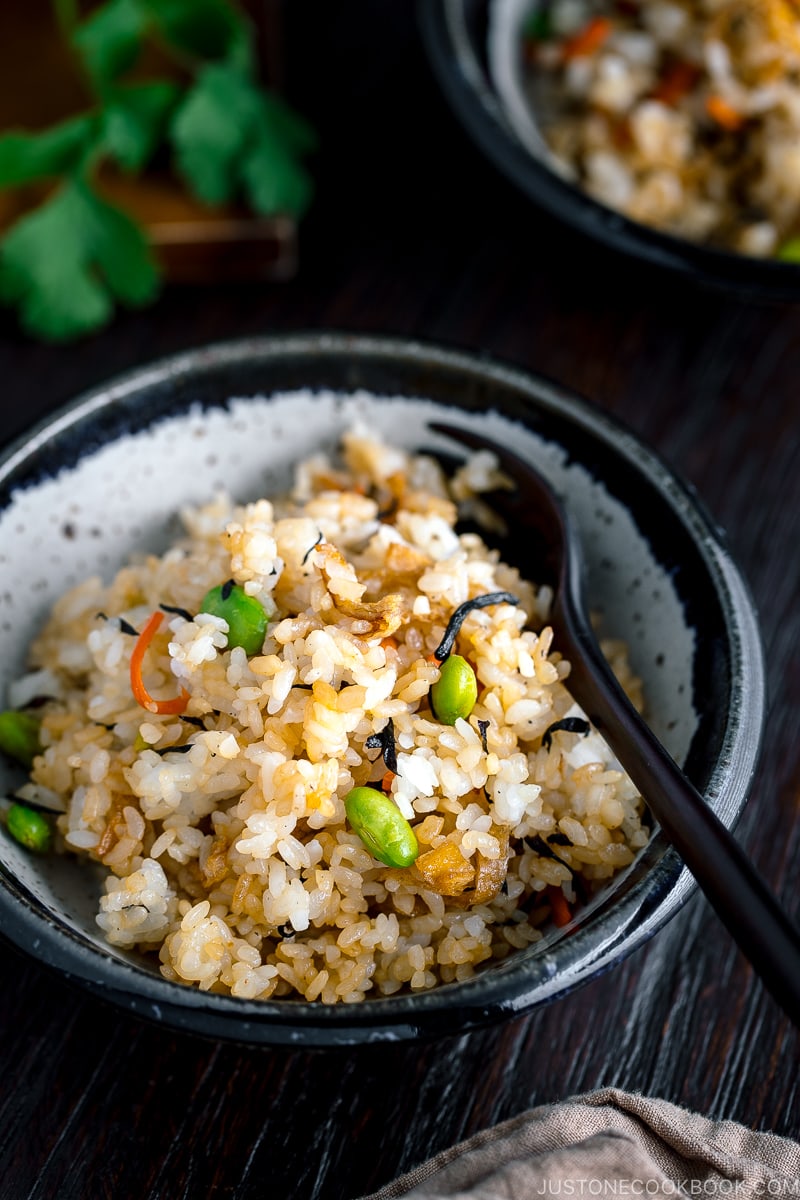
Gluten-Free & Vegetarian/Vegan Japanese Fried Rice
Because the Japanese consume rice and rice products in our diet, you can easily adapt many Japanese foods to gluten-free. For recipes with simple seasonings, you just need to replace regular soy sauce with either one of the Kikkoman’s Gluten-Free Soy Sauce.
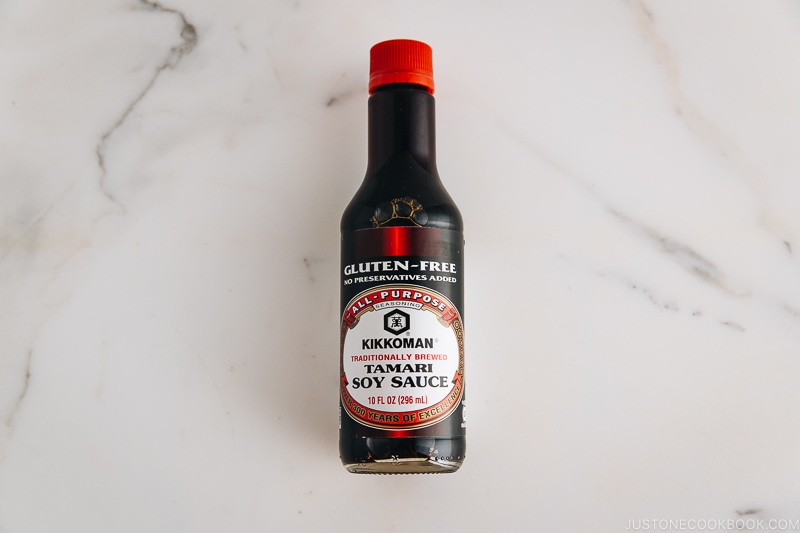
To make this Japanese fried rice, I used Kikkoman’s Gluten Free Tamari Soy Sauce. If you do not have to make this recipe gluten-free, feel free to use regular soy sauce. The flavor is pretty much the same, so there is no need to adjust the amount.
Besides rice, the other main ingredients include a simple combination of edamame, tofu, and hijiki seaweed. It makes a wholesome meatless meal, perfect for those who are vegetarian and vegan.
Of course, you can always toss in some chicken or shrimp too if you wish to add in different proteins to bulk things up.

Substitutes and Variations
1. Japanese Rice
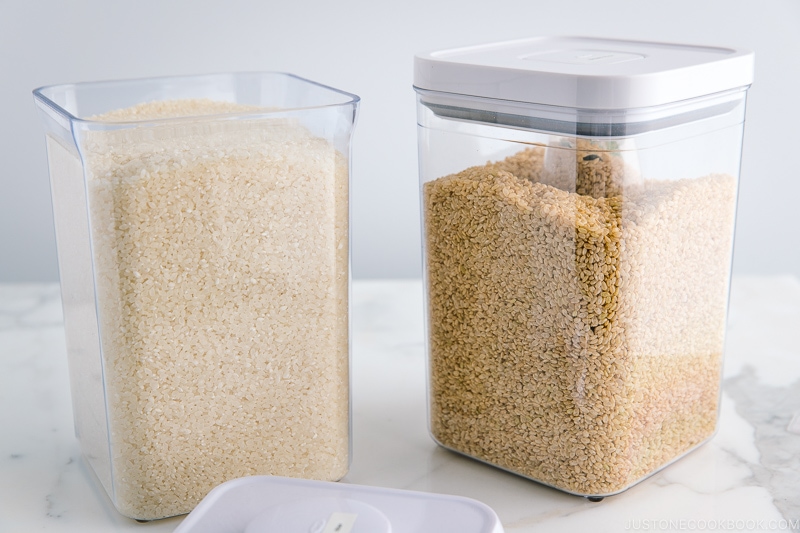
I suspect this would be the first question I’ll get, so let me clarify this in advance. When you make fried rice with Japanese short-grain rice, the rice tends to stick to each other instead of separating like Chinese-style or Southeast Asian-style fried rice. Japanese short-grain rice (sometimes labeled as Japanese sushi rice) is stickier than other types of steamed rice, however, it is not sticky rice (or glutinous rice or sweet rice).
To achieve the right texture and flavor, Japanese short-grain rice is the way to go. The good news is that Japanese rice is widely accessible these days even at major grocery stores. So, why not just grab a bag and get cooking?
2. Hijiki Seaweed
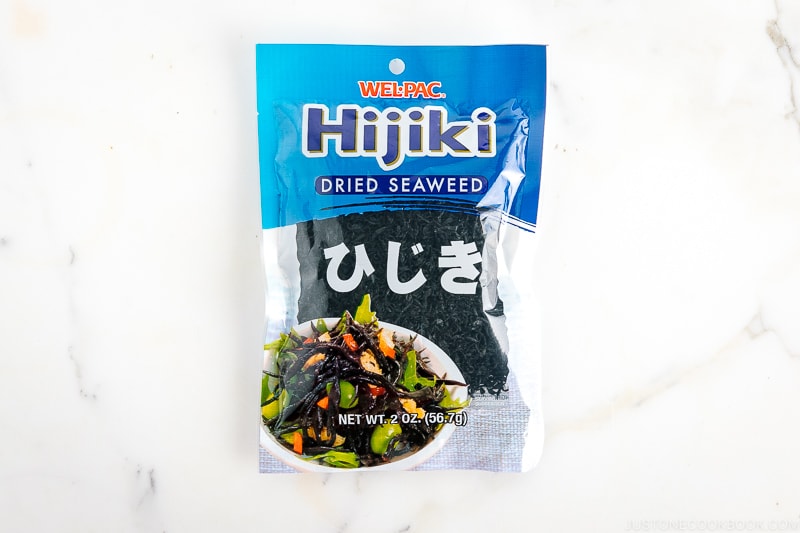
I know, we have many types of seaweed in Japan. You are most likely familiar with nori seaweed for sushi and maybe wakame seaweed in miso soup. Today we’re using hijiki seaweed, which is the main ingredient that gives the fried rice its unique character, texture, and flavor.
Hijiki seaweed is a brown variety of seaweed that resembles dried black tea leaves. It may not be as recognizable as nori, but seaweed is one of the favorite sea vegetables used in Japanese cooking. You can find Hijiki seaweed being sold in dried form in a bag in Japanese/Asian grocery stores or on Amazon. To replicate the exact flavor of this fried rice recipe, you do need to get hijiki seaweeds.
Have read of this article to learn more about different types of seaweeds used in Japanese cuisine and their health benefits.
3. Edamame (Soybeans)
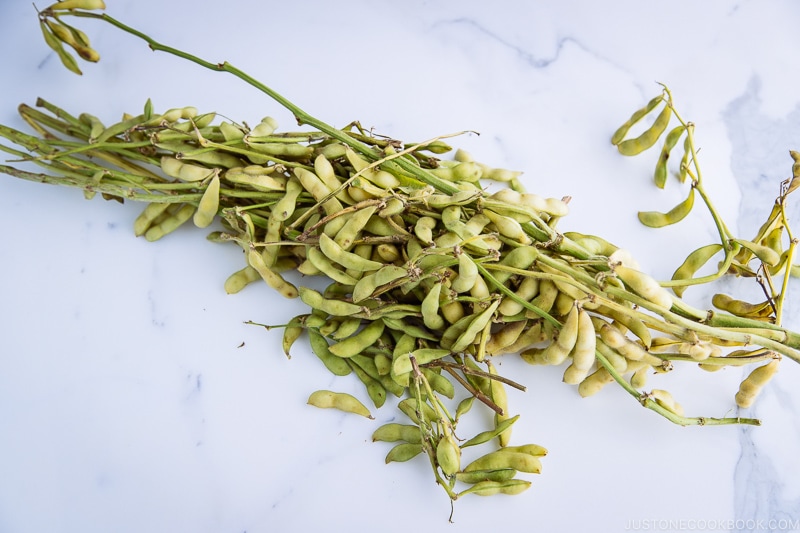
These days you can find edamame in pods or without pods in the freezer section of American or Asian grocery stores. Trader Joe’s carries ready-to-use or frozen edamame too. Defrost them prior to cooking, but to keep the nice green color, don’t add the edamame to the sauce too early otherwise they will end up darker green. If you’re not a fan of the soybeans, you can skip them.
4. Aburaage (Deep-Fried Tofu Pouch)
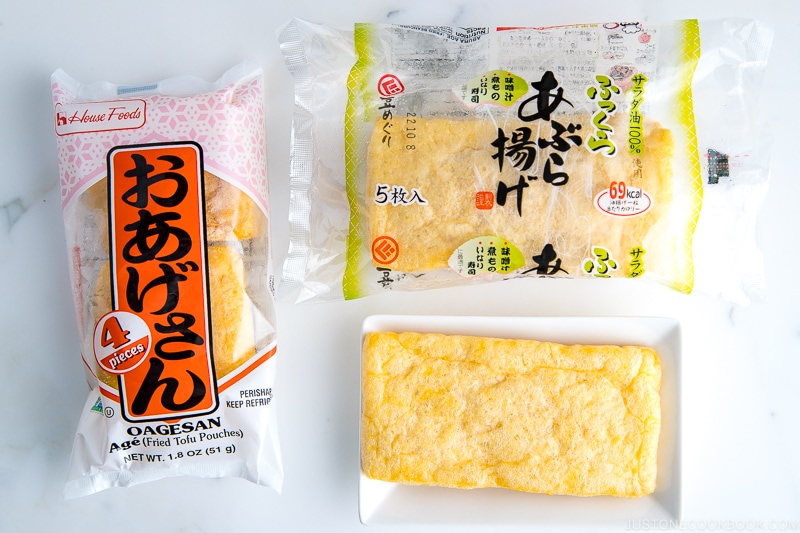
I learned from my readers that it’s actually a lot easier to find Inariage (Seasoned Deep-Fried Tofu Pouch shown below) in Asian grocery stores than Aburaage (shown above). If you use inariage instead of aburaage, remember to adjust the amount of seasonings since inariage is already well-seasoned (sweet and salty).
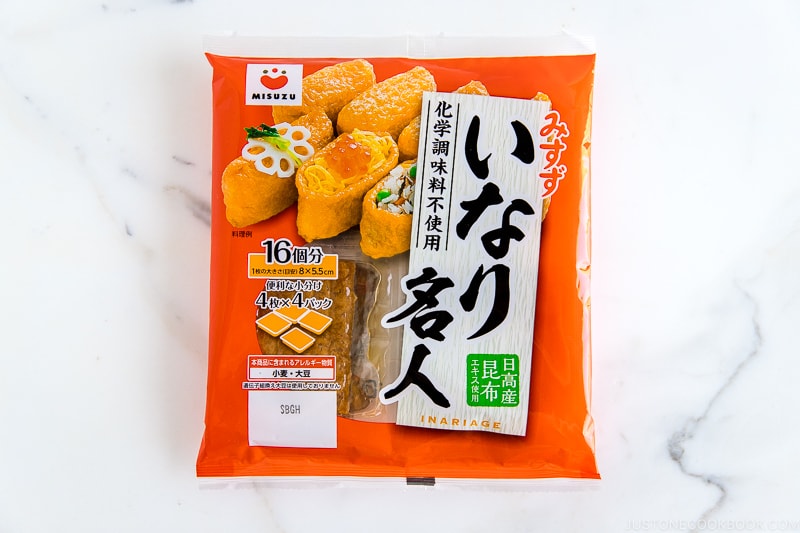
5. Sake and Mirin
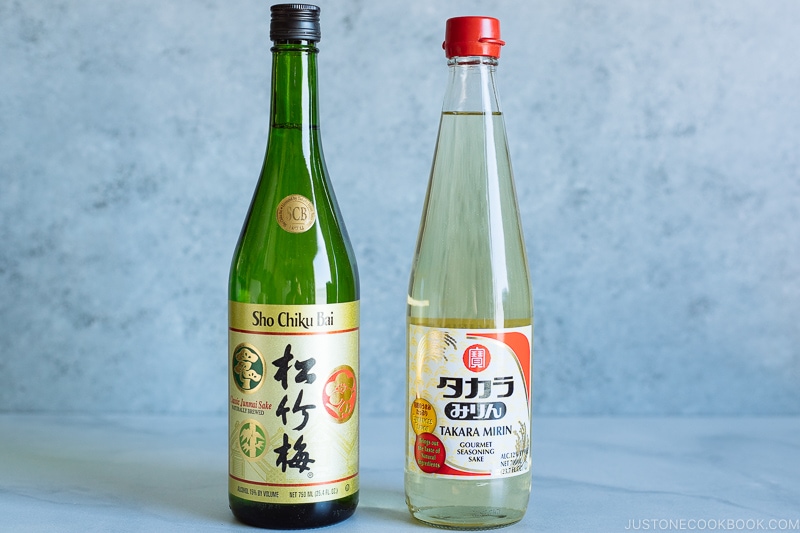
Sake and Mirin are very important ingredients in Japanese cooking. If you plan to cook more Japanese dishes, don’t use substitutions and get them in Japanese/Asian grocery stores. Along with soy sauce, they are the primary condiments used in flavoring this fried rice too.
If you are new to the blog, I encourage you to read this post where we talked about mirin and sake in detail. You will learn about the differences, their uses, substitutions, and our recommended brands, etc.
Minimalist at its best, this copycat version of Trader Joe’s Japanese Fried Rice is truly one of the easiest meals you can whip up any time of the week. Because the fried rice is made from scratch, at home, it also means it is fresher tasting, better seasoned, and healthier for you.
A super easy, copycat recipe for Trader Joe’s popular Japanese Fried Rice with Edamame, Tofu, and Hijiki Seaweed!
Wish to learn more about Japanese cooking? Sign up for our free newsletter to receive cooking tips & recipe updates! And stay in touch with me on Facebook, Pinterest, YouTube, and Instagram.
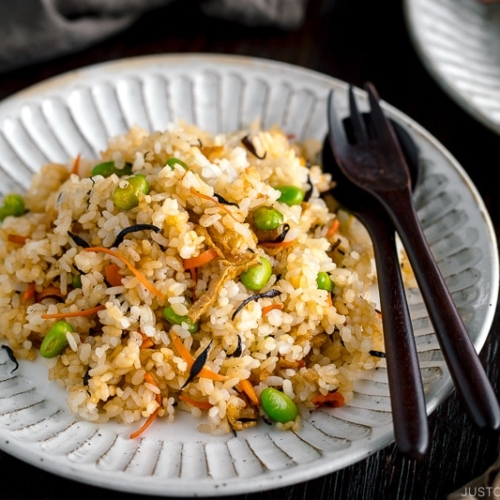
Japanese Fried Rice with Edamame, Tofu and Hijiki Seaweed
Video
Ingredients
- 2–3 servings cooked Japanese short-grain rice (cold and preferably day old; about 1 cup, 150 g per serving; use the larger amount if serving as an entrée)
- 1 Tbsp dried hijiki seaweed
- 1 piece aburaage (deep-fried tofu pouch) (0.7 oz, 20 g; you can substitute it with inariage/seasoned fried tofu pouch, but it's very sweet, so reduce the amount of sugar/mirin)
- 1 carrot (2.8 oz, 78 g)
- ½ cup edamame (2.4 oz; shelled and defrosted)
- 1 Tbsp toasted sesame oil
Instructions
- Gather all the ingredients first. For the cooked rice, please note that 1½ cups (300 g, 2 rice cooker cups) of uncooked Japanese short-grain rice yield 4⅓ cups (660 g) of cooked rice. See how to cook short-grain rice with a rice cooker, pot over the stove, Instant Pot, or donabe. If you just cooked your steamed rice, transfer it to a baking sheet lined with parchment paper to cool it and let the moisture evaporate.

- Rehydrate 1 Tbsp dried hijiki seaweed in 1 cup water for 20 minutes.

- Bring a small pot of water to a boil. Add 1 piece aburaage (deep-fried tofu pouch) in the boiling water and flip once. This step is optional, but it’s best to remove the oil from the aburaage. Transfer to a plate to let cool. Cut into thin strips and squeeze out the water.

- Slice 1 carrot into slabs and then julienne strips.

- Heat 1 Tbsp toasted sesame oil over medium heat in a large frying pan. When it’s hot, add the hijiki seaweed, aburaage, and carrot. Sauté to coat with the oil.

- Add 1 Tbsp sake, 1 Tbsp sugar, and 3 Tbsp mirin.

- Add 3–4 Tbsp soy sauce and mix all together.

- Add ½ cup edamame and 2–3 servings cooked Japanese short-grain rice (cooled). Break the rice into smaller pieces (as Japanese rice tends to stick together) with a wooden spatula.

- Make sure the rice is not clumped together and that each grain is well coated with the seasonings. Once heated through, serve and enjoy immediately.

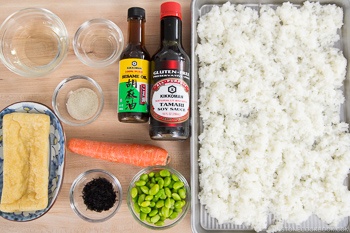


















Hi Nami,
Thank you for this recipe. It’s my son’s favorite dish!
I’d love to make it for his birthday but I ran out of hijiki and I can’t get hold of them on time.
Do you have a suggestion on what to use instead of hijiki? I have a lot of Chinese shops around but Japanese ingredients are very limited.
Thank you.
Hi Serena,
Hum… We are not sure what is available in your local Chinese shops, but you may try to find “Arame.” It cooks faster than Hijiki and little bit different texture but very similar to Hijiki. You may also use Kombu (hydrate and cut small) to use as a substitute.
We hope this helps!
Thank you so much! I’ll go for kombu.
Cooking it tonight.
Hi Serena!
We hope it worked out.
Happy Birthday to your son!🎂🎉
I just wanted to thank you so very much for sharing this recipe!! I’ve always loved the TJ’s rice, and I just started learning how to cook beyond a couple simple things. I’ve made it 4 times this week to use up all the aburaage pieces. It’s eye-opening how we could recreate the exact taste at home so easily (and it tastes even better — so addicting)! I can’t wait to try out your other recipes!
Hi Mai,
Thank you very much for trying this recipe. We couldn’t be happier to hear how much joy and excitement Nami’s recipe has brought to you! 🙂
I love this recipe ! I like to go meatless a few days a week so this was perfect. I used sweet short grain brown rice instead of white so I guess the taste might be a bit different but I loved it anyway.
Hi Sherie! Aww I’m glad to hear you liked the recipe. Sounds healthy with brown rice. We love brown rice too. 🙂
Dear Nami-san,
I just made this tonight accompanied with miso soup, it was very delicious! I didn’t have hijiki and aburage, but I had bok choy, edamame, and some fish balls, it also worked! Oh, I added white sesame and seaweed shreddings at the end before eating, it was a very nice extra touch too. Thank you for the recipe!
Hi Agnes! Ohhh that sounds delicious! Thanks so much for trying my recipe! 🙂
Thank you for the recipe! I didn’t have carrots so I had to skip the carrots but it turned out great!
Hi Michelle! I’m so happy to hear that you enjoyed this recipe! Thank you for your kind feedback. 🙂
[…] Japanese Fried Rice […]
This looks so delicious! Do you think any leftovers could be turned into onigiri?
Hi Ella! Yes you can, but make sure to use Japanese short-grain rice, not other types because rice won’t stick… 🙂
[…] Japanese Fried Rice with Edamame, Tofu and Hijiki Seaweed (Trader Joe’s) […]
Dear Nami,
Thank you for your website and delicious recipes!
I read that hijiki seaweed contains high levels of arsenic.
What do you suggest as a substitute for hijiki in this recipe?
Hi Maria! You can skip it. But I recommend researching a little bit on this topic and why it has to get a label because it’s not just hijiki gets this label but other seaweed as well. My understanding is that you have to eat SO MUCH hijiki PER DAY to start worrying about it. I use hijiki in my dishes 1-2 times a month. And each time is small amount as well. Anyway, I hope that helps!
I just made this! It is really delicious. Definitely a recipe I am going to make again.
Hi Lee! I’m so happy to hear you tried this recipe and enjoyed it! Thank you for your kind feedback!
Confession: there’s no Joe’s where live right now so I’ve never tried theirs. Who needs it? I just made this tonight and it was outstanding! Thanks for another totally delicous recipe, Nami!
Hi Damie! Awesome! Thanks so much for your feedback. I’m so happy you enjoyed this recipe. 🙂
Tried this recipe but changed some of the ingredients. It is SO YUMMY!
Looking for more recipe sharing from you ????
Hi Audrey! Thank you for trying this recipe already! I’m so happy to hear you enjoyed it! 🙂
This looks amazing and cannot wait to try it! I just discovered TJs Japanese style fried rice recently and I am addicted! This version looks even better! Thank you for sharing!
Hi Melanie! I hope you enjoy making this dish! Compared to TJ, it’s less sweet, but considering how much TJ one is sweetened, you may still enjoy the homemade version. 🙂 Thank you for checking out this recipe post!